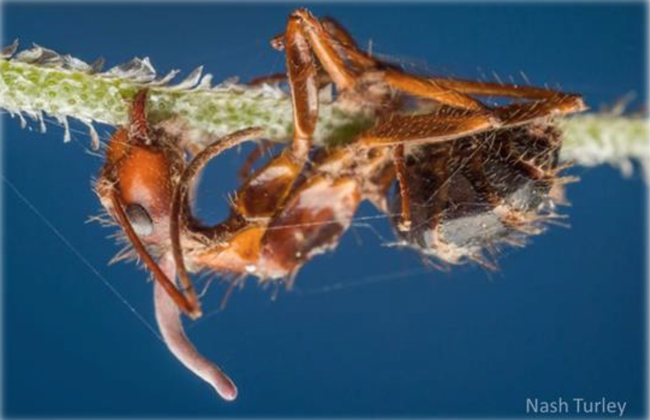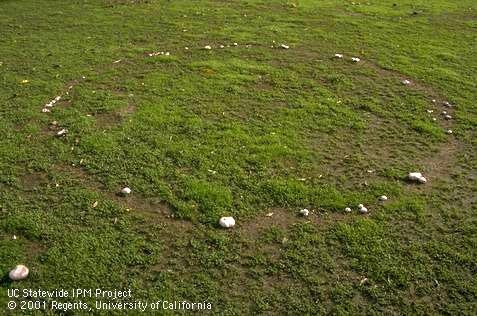Posts Tagged: Fungus
UCF Researcher: When a Fungal Parasite Turns an Ant Into a Zombie
If you're curious about how a fungus can turn an ant into a zombie, you'll want to hear what...

A Zombie ant. (Photo by Nash Turley)
Oh the weather outside is fungal - It’s like a mushroom jungle
Mushrooms are popping up all over California thanks to the wet rainy weather we have had across the state recently. They seem to magically appear overnight, like umbrellas on a sunny beach day. This fascinating occurrence doesn't actually happen overnight as it may seem, but they appear once moisture becomes available. Mushrooms expand rapidly by absorbing water from the surrounding soil and consequently ‘pop' out of the ground.
Mushrooms are the fruiting body of a fungus and come in myriad shapes, sizes and colors. They are typically the only part of a fungus that can be seen because the mass of the organism is located underground.
There are approximately 14,000 different classified species of mushrooms, here are a few of my favorites:
The next time you see mushrooms, consider what might be happening underground in your soil. For more information on mushrooms including identification and management, visit UC IPM online.
Enjoy the wet weather and the next time you find yourself excited over a new fungal find, here is a jingle to celebrate the season:
Let it Rain (sung to the tune of ‘Let it Snow')
by Ann King Filmer
Oh the weather outside is fungal
It's like a mushroom jungle
But since we've got much to gain
Let it rain! Let it rain! Let it rain!
Entomopathogenic fungus Zoophthora phytonomi found in Egyptian alfalfa weevil
The alfalfa weevil complex, comprised of the Egyptian alfalfa weevil, Hypera brunneipennis, and alfalfa weevil, Hypera postica, is the most damaging...

Infected alfalfa weevil compared to healthy weevil
Scientists perplexed by verticillium wilt in lettuce
UC scientists in the Salinas Valley are trying to figure out why certain varieties of lettuce became susceptible in the 1990s to the fungus that causes verticillium wilt and how the fungus is getting into the soil.
"This is one of the more important diseases facing growers in the county," the Salinas Californian quoted UC Cooperative Extension farm advisor Steve Koike. "It has a significant impact and is increasing each year."
Strawberry crops have long suffered from the disease, but lettuce was immune. Strawberry fields are often fumigated to kill fungi, other soil-borne pests and weed seeds, however, the value of the lettuce crop doesn't justify fumigation and methyl bromide, the primary fumigant, is being phased out.
Lettuce farmers must look for other ways to manage fungus-contaminated fields, Koike told reporter Melissae Fellet. Growers can plant crops immune to the fungus, such as broccoli, cauliflower or celery, or they can plant fungus-resistant lettuce varieties.
The scientists, initially mystified about the source of the fungus, recently discovered that spinach seeds from Denmark, Holland, New Zealand and Washington state have been carrying the fungus into Salinas Valley fields, where it persists in the soil for years.
USDA awarded the researchers a $1.5 million grant to investigate how the fungus is transferred from the seeds to lettuce. UC Davis plant pathologist Krishna Subbarao, who is headquartered at the USDA research station in Salinas, is the principal investigator.

Lettuce with verticillium wilt.





